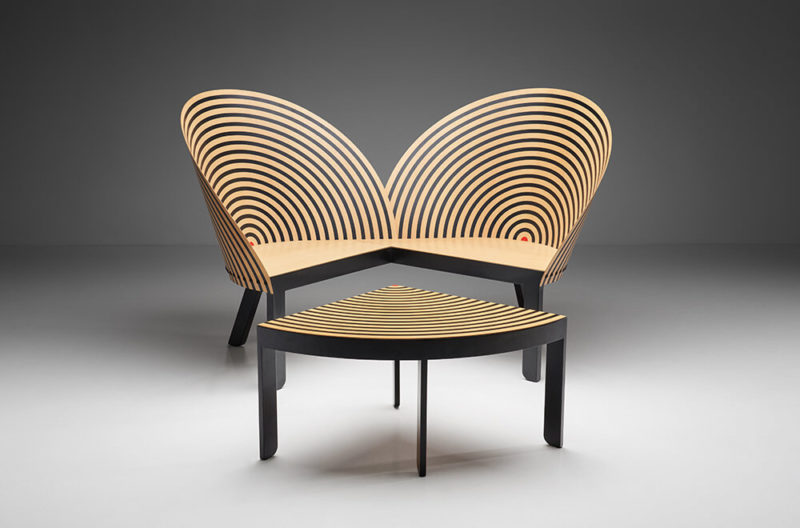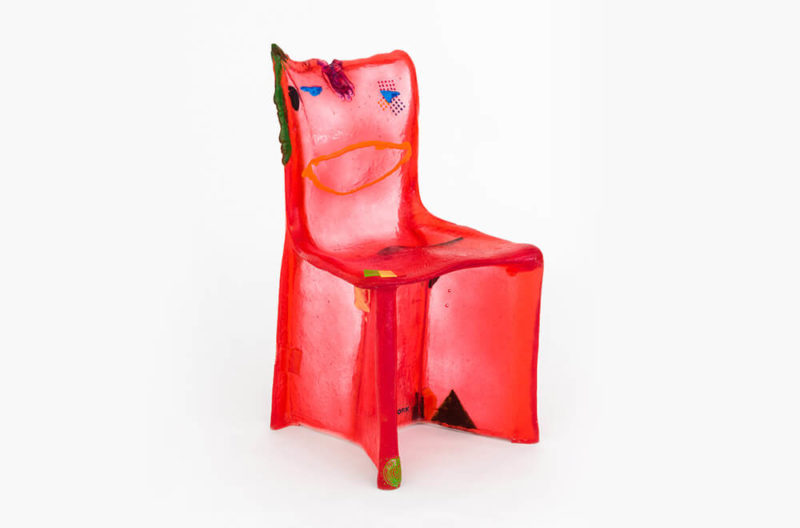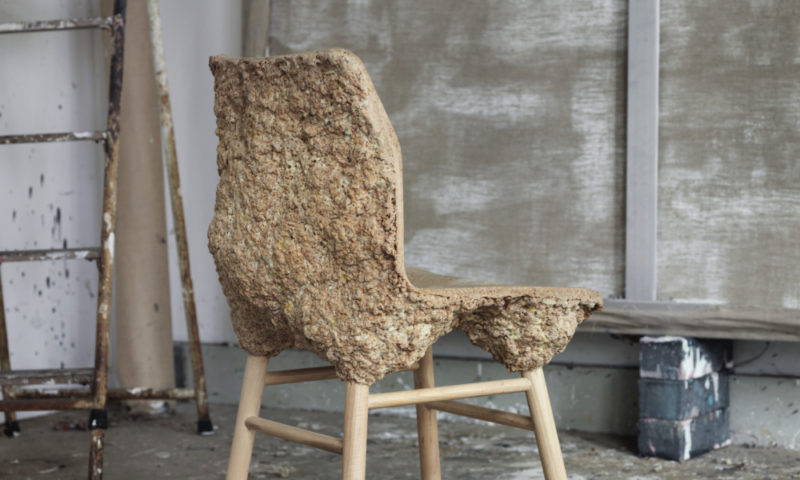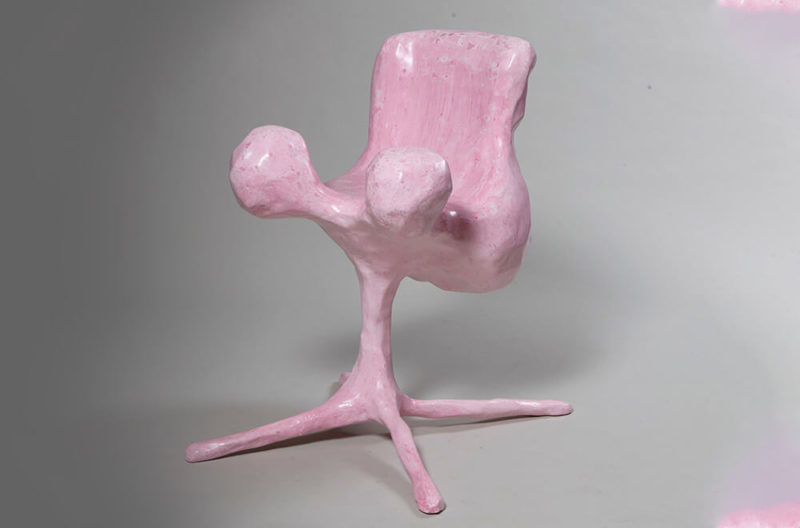‘Hoge’ armchair, 1919
Gerrit Thomas Rietveld
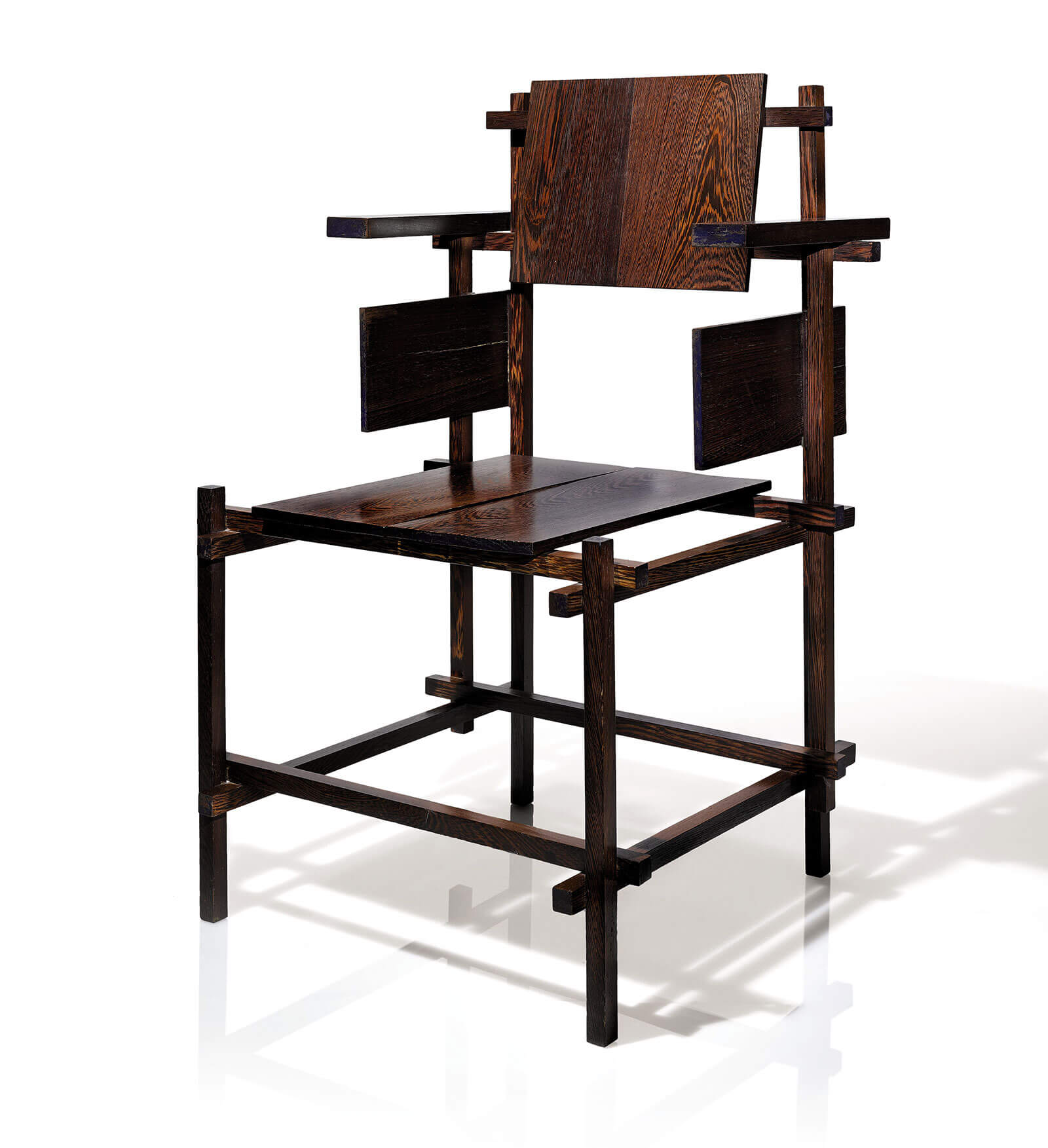
Gerrit Thomas Rietveld, ‘Hoge’ armchair, designed in 1919, this model made in 1963
COURTESY: Sotheby’s/ArtDigital Studio
WHEN THE ARTIST duo Christo and Jeanne-Claude emigrated from Paris to New York in 1964, they took their cherished ‘Hoge’ armchair by Gerrit Rietveld with them. Believed to have been one of the few objects that the pair transported across the Atlantic, it was the only collectible design piece in the white-glove sale of Christo and Jeanne-Claude’s collection at Sotheby’s in Paris on 17th-18th February 2021. The chair soared past its €80,000 – €120,000 estimate to reach €214,200 in the auction, which took place following Christo’s death last year; Jeanne-Claude had died in 2009.
Originally designed by Rietveld in 1919, this particular model was made in 1963. According to Sotheby’s, it was fellow Dutch designer Martin Visser who gave the chair to Christo in exchange for his ‘Empaquetage’ (Package) – a sculptural work from the early 1960s by Christo made of fabric and rope mounted on board. On the reverse side of the seat, Rietveld, whom Visser knew, made a drawing of the chair and wrote a dedication to Christo: “chair 1919. to Mr. Christo. Rietveld. Dec 1963”.
Rietveld’s rigorously designed, resolutely modern, rectilinear chair is like a line drawing in space. Whilst bearing the influence of Russian Constructivism, the geometric precision of its abstract form recalls the visual language of the artist Piet Mondrian, the leading practitioner of the De Stijl art and architecture movement in the Netherlands with which Rietveld was associated. According to the Minneapolis Museum of Art, the chair was first published in the avant-garde Dutch magazine ‘De Stijl’, issue 12, as part of an interior designed by the artist Theo van Doesburg.
Made from Panga Panga wood, which is similar to the African hardwood Wenge, the ‘Hoge’ chair interrogates the volumetric interaction of horizontal and vertical planes and plays with perception. Rietveld painted the ends of the planes a lacquered dark blue in the same way that he would paint them yellow in his iconic ‘Red Blue Chair’ (1918–1923), enhancing its three-dimensionality.
The ‘Hoge’ chair also articulates Rietveld’s desire for his radical and cerebral furniture to be mass-produced rather than handcrafted. The pieces of wood were made in standard sizes so that his manufacturer Gerard van de Groenekan could continue reproducing it for several decades.
The price achieved at Sotheby’s reflects both the appeal of works with significant provenance – in this case, how the inscribed piece belonged to Christo – and the rise of interest among collectors in Rietveld’s work, which has increased dramatically over the last fifteen years. In May 2006, for instance, a ‘Hoge’ chair also executed in 1963, realised just €8,400 at Christie’s – a tiny fraction of the result achieved this week.
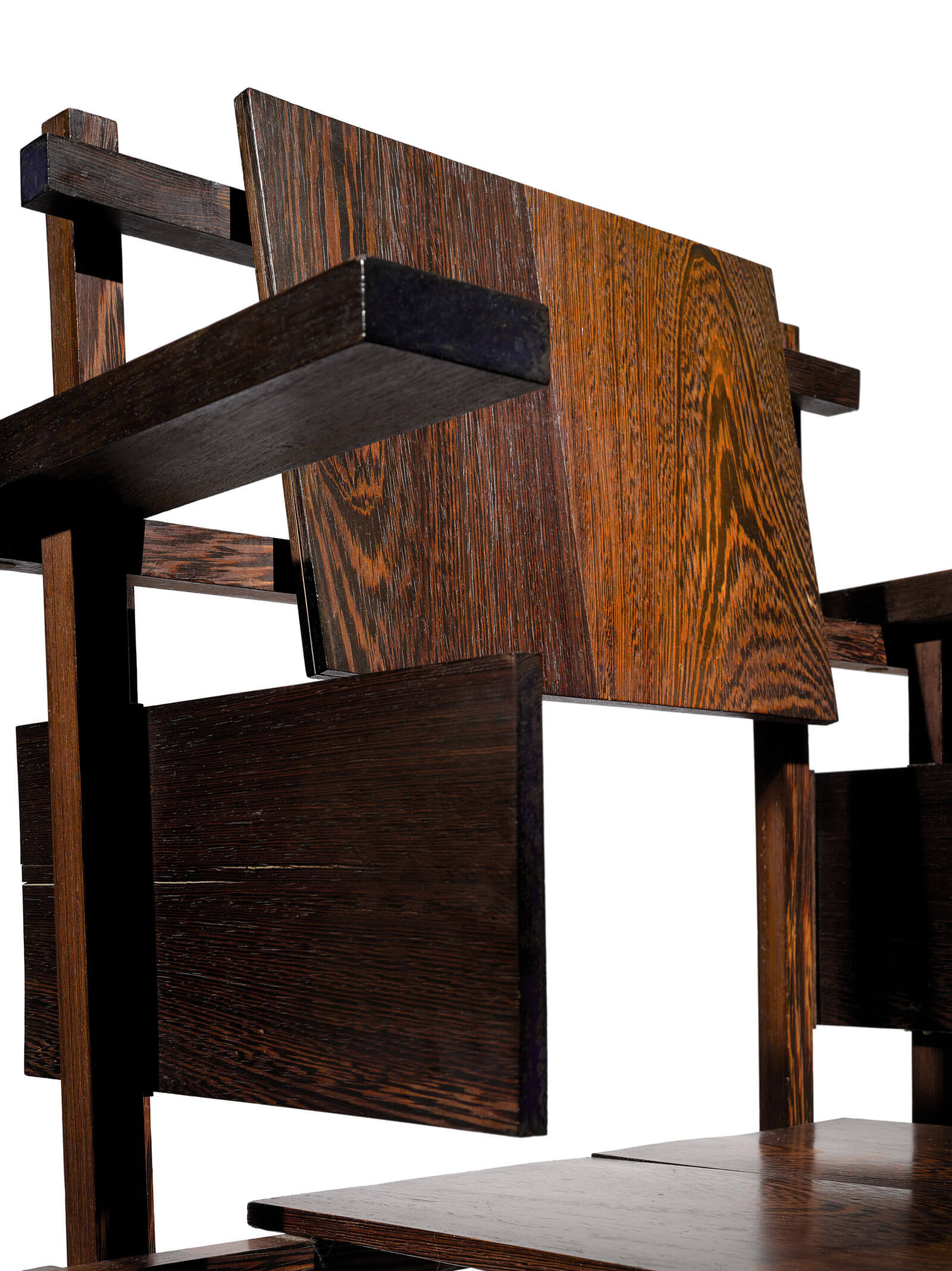
Gerrit Thomas Rietveld, ‘Hoge’ armchair, designed in 1919, this model from 1963 (detail)
COURTESY: Sotheby’s/ArtDigital Studio
Sotheby’s Unwrapped, Part I: The Hidden World of Christo and Jeanne-Claude 17th February 2021, Paris




